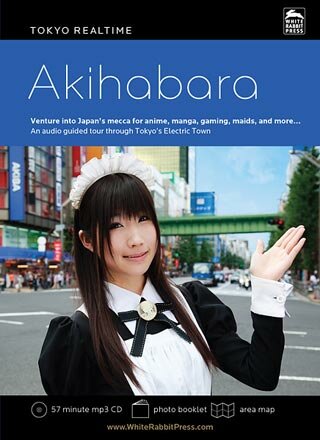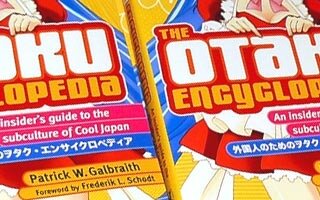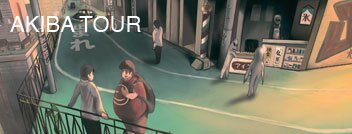 Filed under: Anime
Filed under: Anime'Arrietty' is classic Ghibli
28.07.2010 by Patrick W. Galbraith
“The Borrower Arrietty” (Karigurashi no arietti), released in Japan on July 17, 2010, is the latest animated feature film from Studio Ghibli. After being vastly disappointed with “Ponyo on the Cliff by the Sea” in 2008, I considered skipping this one, but still somehow found myself seated in the theater shortly after it opened. My biggest reason for reconsidering was that Miyazaki Hayao is not directing this time. He is a master of his trade, no doubt, but I still have this lingering itch from the whole “Ponyo” fiasco. Instead, the director for “Arrietty” was Yonebayashi Hiromasa, who worked on the “Mei and the Kitten Bus” short for the Ghibli Museum and was the sakuga (key animation) director for “Laputa: Castle in the Sky.” Not only is this Yonebayashi’s directorial debut, but it also marks him as the youngest director in Ghibli history. While Miyazaki seemed opposed to his son Goro’s directing “Tales of Earthsea,” he seemed to support Yonebayashi. After all, Miyazaki wrote the script for “Arrietty” and supervised the production as “developing manager.” This seems a pretty strong endorsement, and perhaps indicates that Miyazaki is finally ready to make good on his word and retire. To see this moment, even if it is only a possibility, was worth the cost of admission.
*****SPOILERS*****
The story is based on fantasy series by Mary Norton, first published in 1952. The original is about tiny people who live in the homes of big people and "borrow" things to survive while keeping their existence unknown. The main characters are a family of three borrowers: a couple, Pod and Homily, and their spirited teenage daughter, Arrietty. Miyazaki’s version takes place in Koganei in western Tokyo in the year 2010. The movie begins with the arrival of Shou, a 12-year-old human boy suffering from some sort of heart problems. He cannot become too excited lest he aggrivate his condition, and has come to stay with his grandmother to rest up before undergoing surgery. His mother and father are divorced; both are too busy to be with him. The kid is lonely, naturally. Walking into the overgrown garden and lawn area behind his grandmother’s house, Shou catches a glimpse of a tiny girl. He recalls his mother mentioned that she had seen “little people” at this house long ago, and he desperately wants to see them, too.
Arrietty and her father come into the house at night to borrow things, including some tissues from the sleeping Shou’s room, and the girl finds herself staring into the open eyes of the boy. This is bad news, as it means that the family of little people must move. Arrietty, however, is strangely attracted to the boy, and even talks to him through an open window. She seems to feel bad for him, not having close relationships with his parents and living in obvious loneliness and fear before his surgery, which is likely not to cure him anyway. Shou saves her from a crow who tries to eat her. Arrietty’s father is not happy, as she is putting them all in danger. They fear the consequences of being known to humans; Arrietty’s mother is downright terrified of them. The family of little people believe that they are the only one’s left of their kind. Just then, Spiller, a 12-year-old tiny boy, appears before them. He looks like a wilder version of Ashitaka from “Princess Mononoke,” complete with straw cape and bow and arrow. Spiller lives out in the wild, and saws other tiny people live there, too. He is attracted to Arrietty, and the feeling seems mutual.
Shou decides to present the little people with a miniature functional kitchen from a dollhouse in his room. This was ordered by his grandfather for the little people he was convinced existed but never actually saw. He has deduced that Arrietty and he family live beneath the floorboards, and finds a way to access the house through an opening in a closet on the first floor. Though he does not mean any harm, and actually wants to protect the little family (which seems to have something to do with his sense of mortality, loneliness and absent mother), he ends up destroying much of their home. The family decides to abandon what’s left of their beautiful (miniature) home under the floorboards of the house. However, Shou’s actions have accidently revealed the location of the house to Haru, the maid of the house, who captured and bottles Arrietty’s mother. Arrietty enlists Shou’s help in freeing her mother, and the two friends part ways.
The traditional two-dimensional animation is incredible, as to be expected from Studio Ghibli. Japan is really the only place left where a work like this is possible. However, judging from the credits, it appears that almost every major production house in Japan was involved in the project to a certain extent. This seems to reflect a general lack of manpower in the industry, though this work does not suffer from any visual limitations. It is a triumph in that regard. Each image is like a stand-alone work of art, mostly because of the incredible backgrounds (the lived-in house looks like the Ghibli Museum, and the oversized plants and objects are utterly believable in their detail). Movement is fluid and realistic. The somewhat melancholy story is driven home by an excellent score by Cecile Corbel, who composed all the music and sings the theme in both Japanese and English. I am not sure if it is intensional, but the background music is slightly Gaelic (the composer is a Bretonne), giving the whole setting a kind of old-fashioned charm and magic that one wouldn't expect of Koganei.
The work reminds me somehow of “My Neighbor Totoro” with a dash of “Whispers of the Heart.” It has the elegiac feel to the pastoral setting. The longing and nostalgia for times past and places lost is woven deeply into the fabric of the work. At the same time, there is a bittersweet romance to the depictions of unrequited love and loss of youthful innocence. It seems designed more for the young at heart than the truly young; I wonder if kids would really be interested in following the subtle changes in Shou and Arrietty. It seems a little too serious to enjoy at an intuitive level. There are few visual gags and little in the way of comic relief. Not that this is a bad thing. Rather, it is one of those movies that kids watch and kind of shrug off, then come back to and worship when they get older. Movies like “The Last Unicorn,” and much of Studio Ghibli’s library from 1984 to 1995. This is the kind of movie that parents and children should watch together and discuss. Exposing young people to issues like humans and the environment, extinction and terminal illness can turn into a learning experience. That is not to are “Arrietty” is a snorefest. It has enough action and thrills to keep one’s attention, and it is loads of fun to watch. Some of the scenes of Arrietty and her father out "borrowing" in the dead of night are simply magical. The ways that the little people devise to work their way from under the house (encountering a cockroach, which Arrietty chases off), crossing expanses on exposed nails, using a pulley to hoist themselves up, sneaking through empty spaces behind walls (seeing mice, which Arrietty's father advises against bothering), scaling up and down shelves and cupboards and so on is totally believable. There is a joy to seeing a world where everything small is suddenly huge. It has a kind of wonderland feel to it, where even the most mundane of settings (for example, a pile of rumble under the floorboards) becomes a place to explore.
A standout scene is Arrietty looking out onto the expanse of the empty kitchen. It is vast, and the sound of the old refrigerator jarringly loud for her; the camera work is superb, really giving the impression of unbalance and unease, amplified by the lack of background music. The same is true for the encounter with Shou in his room, from the trip through the doll house to the deafening sound of the clock "ticking." Another very cool sequence is Arrietty helping Shou escape from his room (she needs his help to rescue her mother, who the maid Haru has put into a jar; Haru is also the one that locked Shou in his room so that he does not interfere with her efforts to capture the rest of the little people). Shou steps out of his window onto the roof and Arrietty slips through a crack in the window of the room next door. She scales up the curtain using tacks for mountain climbing gear and opens the latch, falling into one of Shou's hands as he opens the now unlocked window with the open. The viewer can really sense the growing trust and friendship between them.
One of the highlights of the film is certainly the complex relationships and development of the characters. Of course there is Shou and Arrietty, and Arrietty and Spiller, but also Arrietty and her high-strung (sometimes snappy, but loving) mother, Arrietty and her stoic father, Arrietty and the cat that is always trying to eat her, etc. No one one dimensional. Indeed, one that that stuck with me was the cat. Some of the scenes of it chasing Arrietty are frightening, like a cat chasing a mouse with the clear intension to kill. However, the cat isn't evil like Lucifer from Disney's "Cinderella." Despite its bad attitude (it is attacked and pecked several times by a crow before finally chasing the bird away) is shown to be very close to Shou, for example. As Arrietty and her family leave the house, she confronts the cat, who, as it stares into her tiny face, decides to let her go. It even goes to get Shou (not that the cat can talk, but it gets him to follow), allowing him to say his final goodbyes. It also seems extremely important that the cat let's the little people go. Consider that Haru, the old lady who captures Arrietty's mother and puts her in a jar like some sort of insect, cannot of her own will let the little people go free. It is for this reason that she comes off as the villain of the piece. But she is not really an entirely bad person. She is a kind enough old lady, a maid that takes care of her mistress, the house and even Shou. She just is so fascinated by the little people that she needs to own them, to collect them, to gaze upon them. She cannot bear for them to be free. It reminds me of a comments by Thomas Lamarre to the effect that humans love animals to death (see his essay in Mechademia 3). The growing global love affair with animals is the inverse to these creatures losing their place; they exist only as spectral forms in images and memories. When Arrietty finally shows herself to Shou, just to tell him that she is leaving, the depressed young man actually tells her that she is part of an endangered species. How many of you are there? Three? Do you know how many humans there are in the world? Many other incredible species are now extinct; I have seen them in books. Arrietty seems about to cry, but instead defiantly tells Shou that the borrowers will live on. The boy realizes his cruel comments were coming from his own bitter fear of death, and his attempts to "protect" the little people, which very well might have involved keeping them in a doll house, were ultimately selfish. He, like the cat, decides to let them go, but takes away from the encounter the will to undergo surgery and live on. The incredible scene of Shou laying in the grass with the cat and talking to Arrietty (he is on his belly, at her level) is mirrored by the end of the film, when Arrietty stands on a post (she is on her feet at his level) and tearfully says her goodbyes to Shou. Spiller, who is helping the family escape down river in a teapot, draws and arrow and aims it at Shou, but, realizing that he is not dangerous (and seeing Arrietty's obvious affection for him) does not fire. This was a heart-rending scene, with Arrietty grabbing Shou's finger and crying with all her might. She says she was happy to be protected by him, and the boy's response is sure to become a Ghibli classic: "You are part of my heart." The end credits show Arrietty accepting a berry (which is huge for her) from Spiller, who is animatedly excited by this (the boys of Ghibli films always seem more anime-like in their movements then the girls, who somehow float), cheering up and heading with her family in the tea kettle down the river towards the setting sun. Once again, the music fits perfectly, making this ending one of the best in recent Ghibli history.
*****END*****
"The Borrower Arrietty" is classic Ghibli, the best that this by now iconic Japanese animation studio has to offer. Not only does it mark the directorial debut of the talented Yonebayashi, but it is also a good summation of much of Miyazaki's worldview. Sitting in the theater, I couldn't help but think that the little people are his ideal for humanity. At the surface, the home that Arrietty and her family live in resembles the world Miyazaki created for the Ghibli Museum, complete with changeable backgrounds behind windows, abundant arts and crafts and good homemade bread and soup. The little people are remarkably handy. They let nothing go to waste, and, though they borrow from the big people, they are basically self-sufficient. There is certainly a meaning to Arrietty's father refusing to touch or use anything from the doll house. Scenes of the family include Arrietty breaking up crackers into powder to make bread, her mother hanging laundry using a sophisticated, jerry-rigged system, her father at his forge or hunting for items in the dead of night (the things he does are really cool, like scaling walls using tape on his hands and feet). This is ultimately what Miyazaki wants – for humans to understand and live with their environment. It is not without significance that Shou's disease is expressed simply as a problem of the heart (according to the original books, it was rheumatic fever). His decision to care, to let the little people go, to live on, is the core development of the story. Arrietty and her family moving into the wilderness and not depending on humans is another one. This is the tragedy of the film: Arrietty is able to show herself and symbolically affirm her existence, but she is also, ultimately, unable to live with humans. In the end, the little people, like the animals Lamarre mentions, end up as specters captured on film even as they disappear. It is depressing that there is no other solution. It also drives home the irony of the film. Arrietty stands boldly at the center of a promotional poster, her image for all to see. This is accompanied by the words "We can't be seen by humans." Despite the moral quandary, "Arrietty" is a top-notched animated feature film that we all would do well to see.
Comment on this article

24.10.2010 · Blog
Tokyo International Anime Fair in Akihabara
Well, the Tokyo Anime Fair Tokyo International Anime Fair has come and gone again. This time was the autumn addition, the "sister event" of...
09.09.2010 · Blog
K-On! Event in Akasaka
Coming towards the end of "K-On!" and honestly not a lot else has been on my mind. OK, so there are other great(er?) anime out there this...
24.07.2010 · Features
Storywriter Sato Dai is frustrated with Japanese anime
Rips on the industry at academic conference
24.07.2010 · Blog
Michael Arias, an American making anime
As part of the Summer Institute of Studies in Japanese Popular Culture, Temple University Japan Campus had a guest lecture by Michael Arias...
08.05.2010 · Reviews
'King of Thorn' film suffers from game-like delivery
Sci-fi survival drama develops in lurches
05.05.2010 · Reviews
'Trigun: Badlands Rumble' is just like old times
The wild west sci-fi thriller doesn't disappoint
24.04.2010 · Blog
Akihabara Gundam Cafe & Bar Opens Tomorrow!
Look out Starbucks the grand opening of the Akihabara Gundam Cafe and Bar starts tomorrow at 8:30am. I've lived here long enough to never...
22.04.2010 · Blog
Haruhi gum!
Lotte's new ACUO gum ad campaign features the girls of "Suzumiya Haruhi." Naturally, I snapped a picture of the sign on the train. I...
20.04.2010 · Blog
Carl Macek (1)
For my generation Robotech would be a pivotal televised animated series that would contribute greatly to the formation and foundation of...
























1 CommentComment Page 1 of 1
Anpn wrote on 05.2.2011:
If I see another panning background, Im gonna slap someone. Test me, do it ONE more time..